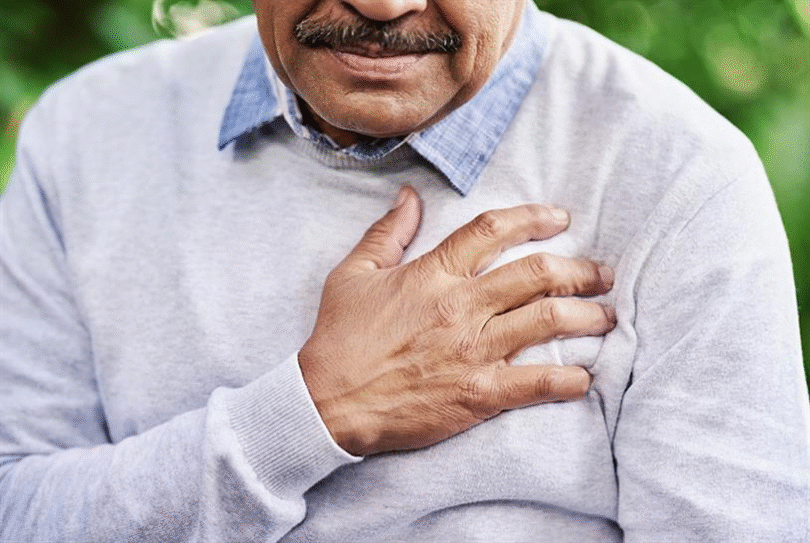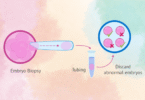Today, most of India’s workforce sits in corporate offices. And when you hear the term corporate worker, you already know what it brings. Stress. Deadlines that never end. Meetings that never stop. The toll is visible. Eighty six percent of corporate employees report health issues linked to their work. Among them, one stands out and cannot be ignored that is chest pain. Chest pain is not just discomfort. It can signal conditions that demand immediate attention. Ignoring it is not an option. Because neglecting health is the same as inviting an early end to life. This is why the subject matters. Read on to understand chest pain better and to learn how to prevent it from turning into a degenerative threat.
Understanding chest pain and its types
When most people hear the term chest pain, their immediate association is with the heart. A heart attack, a cardiac arrest. That is not always the case. Chest pain can also be because of the result of acidity. It can carry several other signals that the body is trying to send.
Medicine classifies chest pain into three types. Cardiac or heart related chest pain. Possible cardiac chest pain. Non cardiac or non heart related chest pain. Each has a different implication.
Cardiac or heart related chest pain
This pain arises when the heart muscle is deprived of oxygen. The arteries of the heart, known as coronary arteries, narrow or are blocked. That impairs blood flow and oxygen supply to the muscle. Following are the symptoms classified according to the severity of the condition: Based on the symptoms, the severity of chest pain is classified as follows:
- Early-stage symptoms: This stage includes mild discomfort or pressure in the chest. It is often described as squeezing, fullness or tightness. Chest heaviness or a burning sensation is common. The symptoms come and go, often triggered by exertion, emotional stress or heavy meals. Shortness of breath is another marker, appearing during exertion or while lying down. Fatigue and unexplained tiredness occur because the heart cannot pump blood effectively. Palpitations or irregular heartbeat signal irritation of the muscle.
- Mild stage symptoms: In this stage intensity and frequency of pain is high. Rest does not relieve it as easily. Pain begins to radiate from the chest to the shoulder, the arm, usually the left, the jaw, neck or back. Other symptoms join in. Nausea. Sweating. Dizziness. Light headedness. Breathlessness that worsens even at rest.
- Late-stage symptoms: This stage is characterized by severe distress. Crushing chest pain, persistent and unrelieved, signalling a possible heart attack. Severe shortness of breath. Fainting or confusion from inadequate blood supply. Cold sweats, nausea and vomiting. A rapid or irregular heartbeat.
Possible cardiac chest pain
This is when the cause may be the heart but is uncertain or mixed with other factors. It can point to early or unstable coronary artery disease. It can mean arrhythmias, myocarditis or other conditions. It requires careful evaluation, through clinical examination, ECG, imaging and sometimes stress testing.
- Early-stage symptoms: Symptoms includes mild or intermittent chest discomfort. The sensation is vague, often tightness, fullness or burning. It may last only a few minutes. There may be shortness of breath, palpitations or fatigue.
- Mild stage symptoms: In this stage an increasing frequency or intensity of discomfort. Pain may radiate to the jaw, neck, arms or back. Sweating, nausea or light headedness may accompany it. The pain may appear at lower exertion levels or even at rest, pointing to worsening cardiac function. This can represent unstable angina or ischemia, requiring urgent attention.
- Late-stage symptoms: Characterized by persistent and severe pain that does not resolve with rest or medication. Breathing becomes difficult. Palpitations and irregular heartbeats occur. Signs of heart attack or heart failure appear. Sweating. Nausea. Vomiting. Dizziness. Fatigue. Sometimes even loss of consciousness from poor cardiac output.
Non cardiac chest pain
This type is not caused by the heart. It can arise from the gastrointestinal system, the musculoskeletal system, the lungs, the nerves or even psychological factors. Below is the list of non- cardiac related factor responsible for chest pain:
- Gastrointestinal causes: include acid reflux, when stomach acid irritates the food pipe, creating a burning or sharp chest pain.
- Musculoskeletal causes: characterized by swelling or injury to chest muscles or cartilage, even rib fractures.
- Lung related causes: inflammation of the lining, pneumonia, pulmonary embolism or collapsed lungs.
- Neurological causes: include shingles and other nerve disorders can also be responsible for chest pain.
- Psychological causes: Such include anxiety, panic attacks or stress.
Depending on the cause, the symptoms of non cardiac chest pain are classified below;
- Early stage symptoms: In this stage there are mild discomfort or sharp pain, often localised. Burning or pressure not related to exertion. The pain may be triggered by meals in gastrointestinal causes or by breathing and movement in musculoskeletal causes. Episodes are short, lasting seconds or minutes. Symptoms can include heartburn, regurgitation or muscle tenderness.
- Mid stage symptoms: include pain that becomes more frequent or lasts longer. It may worsen with breathing, coughing or movement. The discomfort can persist for hours. Underlying causes may become visible. Cough or wheezing with lung problems. Psychological stress may amplify the sensation of pain.
- Late stage symptoms: involve continuous or severe discomfort. The underlying condition worsens. Severe reflux, lung infection or nerve pain. Physical signs appear. Fever with lung infection. Rash with shingles. Swelling and tenderness with musculoskeletal injury. Anxiety or panic that translates into physical distress. The episodes grow long enough to impact daily life.
The Risk factors
- Age: Age is emerging as an important marker. In India, chest pain is increasingly seen among younger adults, particularly those in their thirties and forties.
- Smoking : Smoking raises the risk further. It damages the heart and blood vessels, and chest pain is one of its consequences.
- Diabetes: It also plays a role. It damages the coronary arteries and becomes another reason for chest pain.
- Gender: Gender is another factor. Men are more prone to chest pain because of hormonal differences. Estrogen protects heart health, and men have lower levels of it.
- Family history: History of chest pain or heart attack matters. If there is ischemic heart disease in the family, the risk of cardiac chest pain rises by about forty percent.
- Urban dwellers: They face higher risks. Diet, stress and sedentary habits combine to create conditions that trigger chest pain.
Preventive Steps for Chest Pain
- Healthy diet: A shift towards meals rich in fruits, vegetables, whole grains and omega 3 fatty acids. Cutting down on excess salt, sugar and saturated fats lowers the risk of heart disease.
- Regular exercise: At least one hundred and fifty minutes of activity each week improves cardiovascular health. It also reduces the risk factors of obesity and hypertension.
- Quit smoking: Stopping tobacco use lowers the risk of cardiac chest pain and the lung conditions that trigger chest discomfort.
- Stress management: Relaxation techniques such as meditation, yoga, deep breathing and proper sleep help reduce stress linked to chest pain.
- Hydration: Staying adequately hydrated prevents muscle cramps and the chest tightness they cause.
- Regular health check ups: Early detection and treatment of cardiovascular risks, along with prompt investigation of chest pain symptoms, help prevent serious complications.
Conclusion
Chest pain is not a single condition. It is a signal. Sometimes from the heart, sometimes from elsewhere in the body. What makes it dangerous is not recognising it for what it is. The risks factors include age, smoking, diabetes, gender, family history, the urban lifestyle. Each adds weight. The symptoms are also clear, if one chooses to pay attention. Prevention, though, is within reach. Diet. Exercise. Giving up smoking. Managing stress. Staying hydrated. Getting checked early. Chest pain is easy to dismiss as fatigue or acidity. But ignoring it is costly. The body rarely warns twice.






